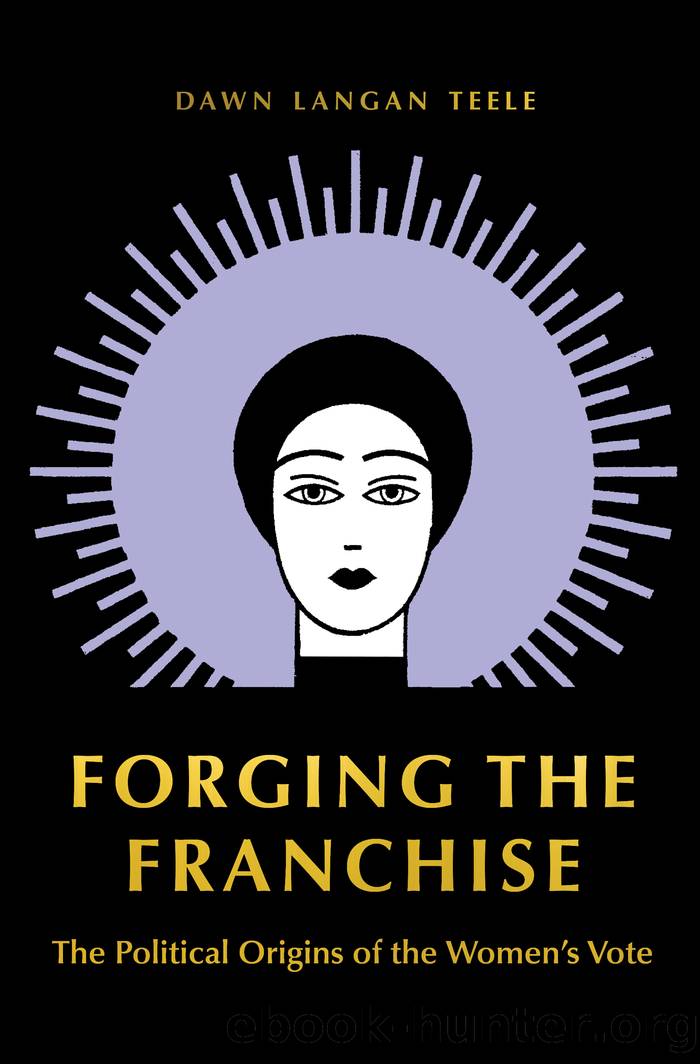Forging the Franchise by Teele Dawn Langan;

Author:Teele, Dawn Langan;
Language: eng
Format: epub
Publisher: Princeton University Press
Published: 2018-07-14T16:00:00+00:00
Measuring Competition
Figure 4.5 presents the average values for three measures of political competition for each geographical region. The variables are ordered from indicators of low competition in the top to indicators of high competition in the bottom. Indicators of low competition include a measure of majority surplus, defined as the fraction of seats that the largest party holds over 50 percent. When majority surplus is high, the dominant party is less vulnerable (David 1972). If the party with the largest share of seats holds a plurality instead of a majority, majority surplus can take on negative values. To construct this measure I took the average over both houses. In the dataset, the average value of majority surplus is 0.27 with a standard deviation of 0.14. At the mean, the largest party controls 77 percent of the seats. A 1 standard deviation increase would give the largest party 91 percent of seats. Over the whole period, as seen in figure 4.5, majorities had the largest margins in the South and the lowest in the West.
Population under machines (%) is another indicator of low competition. This measure divides the total population living in machine-dominated large cities within a state by the state’s total population to construct an annual measure of the intensity of machine politics in urban areas.86 Drawing on the large literature on Gilded Age urban politics, each large American city has been coded annually based on whether or not it was run by a political machine. Large cities are considered to be those with more than 25 thousand residents circa 1900. In 1900, 160 cities had more than 25 thousand residents. Overall, 38 of the then 48 states had a city this large, and the average number of cities of this size in the states which had at least 1 was 4.21. Within the group of 160 cities, 30 had a machine circa 1900. The machine data have been collected from 1850 to 1950, but only the years in the sample (1893–1920) are used herein.
Download
This site does not store any files on its server. We only index and link to content provided by other sites. Please contact the content providers to delete copyright contents if any and email us, we'll remove relevant links or contents immediately.
International Integration of the Brazilian Economy by Elias C. Grivoyannis(75551)
The Radium Girls by Kate Moore(11627)
Turbulence by E. J. Noyes(7708)
Nudge - Improving Decisions about Health, Wealth, and Happiness by Thaler Sunstein(7255)
The Black Swan by Nassim Nicholas Taleb(6775)
Rich Dad Poor Dad by Robert T. Kiyosaki(6186)
Pioneering Portfolio Management by David F. Swensen(6084)
Man-made Catastrophes and Risk Information Concealment by Dmitry Chernov & Didier Sornette(5659)
Zero to One by Peter Thiel(5498)
Secrecy World by Jake Bernstein(4395)
Millionaire: The Philanderer, Gambler, and Duelist Who Invented Modern Finance by Janet Gleeson(4108)
The Age of Surveillance Capitalism by Shoshana Zuboff(3991)
Skin in the Game by Nassim Nicholas Taleb(3973)
The Money Culture by Michael Lewis(3851)
Bullshit Jobs by David Graeber(3837)
Skin in the Game: Hidden Asymmetries in Daily Life by Nassim Nicholas Taleb(3731)
The Dhandho Investor by Mohnish Pabrai(3566)
The Wisdom of Finance by Mihir Desai(3531)
Blockchain Basics by Daniel Drescher(3333)
